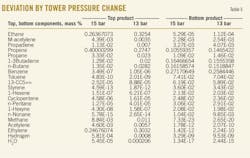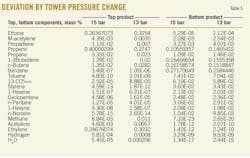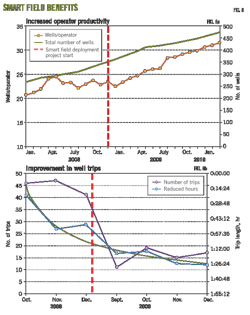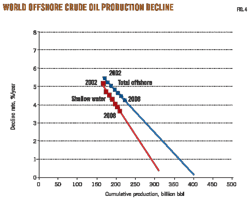Oil potential seen in Silurian reef-related reservoirs in Illinois Sangamon arch
The Silurian carbonate succession of the Sangamon arch in west-central Illinois includes hydrocarbon reservoirs that have produced chiefly from dolomitized nonreef facies (Fig. 1A).
Nearly 30 million bbl of oil have been produced from the Middle Silurian (Niagaran) Racine formation along the southeastern flank of the arch in Macon, Christian, and Sangamon counties. An intra-Niagaran unconformity subdivides the Racine formation into two depositional sequences1 comprising several producing dolomite horizons (Fig. 2).
Reported initial production in the area indicates that the rocks of the lower sequence may have a greater hydrocarbon reservoir potential than the upper sequence. However, in a large area of the Sangamon arch, few wells have tested the lower sequence, and hydrocarbon production to date has been chiefly from the carbonate reservoirs in the uppermost part of the upper sequence of the Racine formation.
Although most of the wells drilled thus far in the Mount Auburn trend have only tested the upper sequence, this study indicates that the Lower Racine sequence also may have excellent potential for additional discoveries.
Detailed studies of the available subsurface data, including well cuttings, cores, and geophysical logs, have revealed the presence of patch reefs and associated reservoir facies in the lower sequence of the Racine formation in the Mount Auburn trend of the Sangamon arch (Fig. 1B).
The presence of Niagaran reef reservoirs in the Sangamon arch area has only recently been documented.2 This report concentrates on the northeastern portion of the Mount Auburn trend in Macon County (Fig. 1B), where patch reef or reef-related reservoirs have been identified in the lower Racine sequence. The reservoir facies were described and classified using the textural schemes of Dunham3 and Embry and Klovan.4
Geological background
The Sangamon arch is a broad southwest-trending structure in west-central Illinois that was formed as a result of upward warping during Silurian and Devonian times.5
It is located on the gently sloping ramp area, just northwest of the Illinois basin, where the uppermost Silurian and Middle to Upper Devonian deposits are absent. The Silurian succession of the Illinois basin consists chiefly of carbonate rocks and is a part of the Silurian-Middle Devonian Hunton Megagroup6 that constitutes the upper part of the Tippecanoe Sequence of Sloss.7
Deposition of carbonates on the Sangamon arch was terminated as a result of the worldwide pre-Middle Devonian sea level fall7 8 and upwarping of the arch during Late Silurian through Middle Devonian times.5 Prolonged exposure of the arch resulted in partial erosion of the Silurian deposits and formation of an uneven topography that was later buried by the Upper Devonian to lowermost Mississippian organic-rich New Albany shale.
In the Sangamon arch area, the upper part of the Silurian carbonates is classified as the Niagaran Racine formation (Fig. 2), which is equivalent to the Moccasin Springs formation of southern Illinois (based on the stratigraphic classification scheme of Willman and Atherton for western Illinois).9 It is characterized by interbedded limestone, dolomite, silty argillaceous dolomitic limestone or dolomite, and calcareous shale.
Structure and entrapment
The Mount Auburn trend, located along the southern flank of the Sangamon arch, encompasses a number of oil fields and covers parts of Macon and Christian counties in west-central Illinois (Fig. 1B).
As shown by the structure contour map of the top of the Silurian deposits, the direction of the regional dip in the study area, on the whole, is towards the southeast (Fig. 1C). No structural closures are present in the area, and minor closures in some areas of the Sangamon arch are the consequence of post-depositional erosion and formation of uneven topography at the sequence boundaries.
A combination of depositional and diagenetic stratigraphic traps controlled petroleum entrapment in the Mount Auburn trend, and the reservoirs are sealed by lime mudstones to packstones that were deposited in quiet-water environments following the flooding stages of high frequency sea level cycles. Erosion at the sequence boundaries locally has resulted in partial or total removal of the interval that could otherwise include porous reservoir facies.
Production history
Commercial production from the Middle Silurian Racine formation in the Sangamon arch area began in 1925 with the discovery of Decatur field in Macon County, followed by the discovery of Mount Auburn Consolidated field in 1943 and Roby field in 1949 in Christian and Sangamon counties, respectively.
Several other fields have been discovered since 1949. Nearly 30 million bbl of oil have been produced from these fields (production report compiled by Bryan G. Huff at Illinois State Geological Survey) chiefly from the dolomitized nonreef carbonate reservoirs in the upper part of the Silurian succession.
In 1962, Atkins and Hale completed the Dipper No. 1, in 28-16n-1e, in Blackland North field in Macon County, for an initial production of 3,120 b/d of oil, the highest reported in the Sangamon arch area. The main oil-saturated zone is in a reef and reef rudstone facies at 2,003-37 ft in the upper part of the lower Racine sequence. The cumulative production of the Dipper well has been over 123,000 bbl of oil, and it is still producing through gravity drive mechanism.
An offset to the southwest, the Atkins and Hale Whitley No. 1, was completed in the same zone with an initial production of 350 b/d of oil. It produced 93,000 bbl of oil before it was abandoned in 1971. These two wells have produced nearly one half of the field’s total cumulative production. In Blackland North field, 61 wells have been completed in the Middle Silurian Racine formation. All wells, except for the two wells mentioned above, were completed as upper Racine producers.
During 1983-92 seven wells were completed in the lower Racine in Decatur, Harristown, and Mount Auburn Consolidated fields as marginal producers. The oil-saturated intervals of these wells all occur at the same horizon as the Dipper and Whitley wells described above.
More than 20 ft of very porous oil saturated interval was encountered in the Pawnee Oil Corp. Garver No. 1, in 2-16n-1e, in Harristown field (Fig. 2) and in the Elder No. 1, in 12-15n-1w, in Mount Auburn Consolidated field. Position of the wells in relation to the regional dip, and perhaps problems during completion, may have resulted in their low productivity.
Reservoir facies
The reservoirs of the lower Racine in the Mount Auburn trend are porous dolomitized coral reef or reef rudstone facies (Fig. 3) in the upper part of the lower Racine sequence.
The reef and reef rudstone facies consist of coarsely crystalline dolomite containing poorly preserved fossils and skeletal molds of reef-building organisms (mainly corals) with intercrystalline and moldic porosities of up to 25%. The reef-building skeletons are recognizable in cores and hand samples (Fig. 3), but the detail of their structure has been lost due to pervasive dolomitization so that in thin sections only a very faint relic of the original fossil is visible (Fig. 4).
The reservoir facies are of limited lateral and vertical extent that can reach a total thickness of up to 30 ft (9 m) and constitute the upper part of meter-scale, shallowing-upward cycles (Fig. 2). They were deposited along a southwest-trending ramp margin that was roughly parallel to the Mount Auburn trend and graded basinward into muddy open-marine carbonates below wave base and landward into ramp restricted facies similar to numerous modern and ancient examples.10-12
Patch reef vs. pinnacle reef
The known productive reefs in the Illinois basin are Middle to Late Silurian age pinnacle reefs as much as 700 ft (210 m) thick13 14 that nearly all developed along the NE-SW trending platform margin that faced the deep Illinois basin,15-17 possibly along a distally steepened ramp margin.
The small Niagaran patch reefs of the Mount Auburn trend, on the other hand, developed on the very gently sloping monoclinal ramp platform of the Sangamon arch (ramp platform of Ahr).18 Reef-building metazoans typically form laterally and vertically extensive buildups along platform margins, where nutrient supply is abundant and depositional energy is very high.10 19
Because the depositional wave and current energy was relatively weak in the homoclinal ramp setting of the Sangamon arch, only small patch reefs were developed instead of the large pinnacle reefs that developed along the southern Illinois platform margin.15-17
Whitaker20 had envisioned a broad gently sloping ramp for the entire Illinois basin and proposed that pinnacle reefs of considerable size were randomly developed across the southern half of Illinois, including the deep basinal area of the Illinois basin. He further suggested that much of the thickness of pinnacle reefs in the shelf areas (including the Sangamon arch) were reduced as a result of pre-Devonian erosion.
The results of this study, however, do not support Whitaker’s interpretation. The Springfield East example, the Aladdin Oil No. 1 Scott, in 21-15n-4w, which Whitaker (1988) cited as a remnant pinnacle reef producer is, in fact, a nonreef dolomitized mudstone to packstone reservoir; detailed inspection of cores has revealed the absence of any reef structures or fossils of reef-building organisms in this well.
Whitaker20 also mentioned Decatur field in Macon County as being a remnant pinnacle reef producer without providing any evidence to support his conclusion. Five wells were completed in Decatur field in 1983 (see above) that had a total cumulative production of nearly 14,000 bbl of oil. However, the actual amount of oil produced may have been much higher than reported (S.T. Whitaker, personal communication, 2009).
Neither cores nor samples are available, but well-to-well geophysical log correlation with other fields in the study area, nevertheless, indicates that the wells were completed in the reservoir rocks equivalent to the reefs described in this study. In these wells (Watters Oil and Gas Co. Nolan No. 3, 36-17n-2e, Macon County, for example), the reservoir occurs at about 50 ft (15 m) below the base of the New Albany shale and displays meter-scale shallowing upward cycles of deeper marine, dense argillaceous limestone or calcareous shale to porous dolomite. If this were a remnant pinnacle reef core, one would expect it to be in immediate contact with the New Albany shale without any intervening impermeable shale or limestone intervals.
Acknowledgment
The author thanks B. Seyler, B.G. Huff, and Z. Lasemi of the Illinois State Geological Survey at the University of Illinois for critically reviewing the first draft of the manuscript. Thorough review of the final version of the article by J.H. Goodwin, also at Illinois State Geological Survey, led to significant improvement of the manuscript. S. Lang, an independent petroleum geologist, provided core samples of Elder Well No. 1. Publication authorized by the director, Illinois State Geological Survey.
References
- Lasemi, Y., “A prominent unconformable boundary within the upper Niagaran Racine formation: Record of a major Middle Silurian tectono-eustatic event in the Sangamon arch, west-central Illinois,” Geological Society of America North-Central Meeting Abstracts with Programs, Vol. 41, No. 4, 2009, p. 26.
- Lasemi, Y., and Seyler, B., “Potential for prolific reef-related reservoirs in the Sangamon arch, west-central Illinois,” AAPG-SPE Eastern Meeting Abstracts, 2008, p. 38.
- Dunham, R.J., “Classification of carbonate rocks according to depositional texture,” in Ham, W.E., ed., “Classification of Carbonate Rocks,” AAPG Memoir 1, 1962, pp. 108-121.
- Embry, A.E., and Klovan, J.E., “A Late Devonian reef tract on northeastern Bank Island, Northwest Territories,” CSPG Bull., Vol. 19, 1971, pp. 730-81.
- Whiting, L.L., and Stevenson, D.L., “The Sangamon Arch,” Illinois State Geological Survey Circular 383, 1965, 20 pp.
- Swann, D.H., and Willman, H.B., “Megagroups in Illinois,” AAPG Bull., Vol. 45, 1961, pp. 471-83.
- Sloss, L.L., “Sequences in the cratonic interior of North America,” GSA Bull., Vol. 74, 1963, pp. 93-114.
- Vail, P.R., Mitchum, R.M., and Thompson III, S., “Seismic stratigraphy and global changes of sea level: part 4: global cycles of relative changes of sea level,” in Payton, C.E., ed., “Seismic Stratigraphy-Applications to Hydrocarbon Exploration,” AAPG Memoir 26, 1977, pp. 83-97.
- Willman, H.B., and Atherton, E., “Silurian System,” in Willman, H.B., Atherton, E., Buschbach, T.C., Collinson, C., Frye, J.C., Hopkins, M.E., Lineback, J.A., and Simon, J.A., eds., “Handbook of Illinois Stratigraphy,” Illinois State Geological Survey, 1975, pp. 87-104.
- Wilson, J.L., “Carbonate Facies in Geologic History,” Springer-Verlag, Berlin, 1975, 471 pp.
- Tucker, M.E., and Wright, V.P., “Carbonate Sedimentology,” Blackwell, Oxford, 1990, 482 pp.
- Flugel, E., “Microfacies of Carbonate Rocks,” Springer-Verlag, Berlin, 2004, 976 pp.
- Lowenstam, H.A., “Niagaran reefs in Illinois and their relation to oil accumulation,” Illinois State Geological Survey, Report of Investigations 145, 1949, 36 pp.
- Bristol, H.M., “Silurian Pinnacle reefs and related oil production in southern Illinois,” Illinois State Geological Survey, Illinois Petroleum 102, 1974, 98 pp.
- Shaver, R.H., Ault, C.H., Ausich, W.I., Droste, J.B., Horowitz, A.S., James, W.C., Okla, S.M., Rexroad, C.B., Suchomel, D.M., and Welch, J.R., “The search for a Silurian reef model Great Lakes area,” Indiana Geological Survey Special Report 15, 1978, 36 pp.
- Droste, J.B., and Shaver, R.H., “Recognition of buried Silurian reefs in southwestern Indiana: Application to the Terre Haute Bank,” Jour. of Geology, Vol. 88, 1980, pp. 567-87.
- Droste, J.B., and Shaver, R.H., “Upper Silurian and Lower Devonian Stratigraphy of the Central Illinois Basin,” Indiana Geological Survey, Special Report 39, 1987, 29 pp.
- Ahr, W.M., “The carbonate ramp: an alternative to the shelf model,” GCAGS Transactions, Vol. 23, 1973, pp. 221-225.
- James, N.P., “Reef environment,” in Scholle, P.A., Bebout, D.G., and Moore, C.H., eds., “Carbonate Depositional Environment,” AAPG Memoir 33, 1983, pp. 345-440.
- Whitaker, S.T., “Silurian Pinnacle reef distribution in Illinois: Model for hydrocarbon exploration,” Illinois State Geological Survey, Illinois Petroleum 130, 1988, 32 pp.
- Buschbach, T.C., and Kolata, D.R., “Regional setting of Illinois Basin,” in Leighton, M.W., Kolata, D.R., Olts, D.F., and Eidel, J.J., eds., “Interior Cratonic Basins,” AAPG Memoir 51, 1991, pp. 29-55.
The author
Yaghoob Lasemi is a carbonate sedimentologist/reservoir geologist in the oil and gas section of the Illinois State Geological Survey at the Institute for Natural Resource Sustainability, University of Illinois. In 1981-87 he was an exploration geologist in southern Illinois. In 1987-2007 he was a faculty member in the geology department at Tarbiat Moallem University. He has supervised over 80 MS and PhD theses on facies analysis, depositional environments, and sequence stratigraphy. He has a BS in geology from Tehran Teachers College (TMU), an MS from Michigan State University, and a PhD from the University of Illinois at Urbana-Champaign.
India
Gujarat State Petroleum Corp. and GeoGlobal Resources Inc., Calgary, are starting development of Tarapur 1 oil field in western India’s Cambay basin.
Full field development is to involve 17 wells by the end of 2009. An engineering report attributes 1.753 million stb of proved developed nonproducing oil reserves to the first six wells. GeoGlobal’s interest is 14%.
Production in May from the first three wells totaled 8,155 bbl of oil and 3.6 MMscf of gas. In June the three wells averaged 466 b/d and 420 Mcfd.
Louisiana
Portrush Petroleum Corp., Vancouver, BC, signed an agreement with an undisclosed operator to develop a 1,200-acre prospect in Pointe Coupee Parish 30 miles northwest of Baton Rouge, La.
Portrush will review all existing technical data on the prospect, a downtrown fault trap in the fairway of the Oligocene and Eocene producing trends and possibly prospective in the Frio, Vicksburg, Cockfield, Sparta, and Wilcox sand series.
An initial well would be drilled to 11,600 ft. If it is successful, five wells will be required to complete development.



